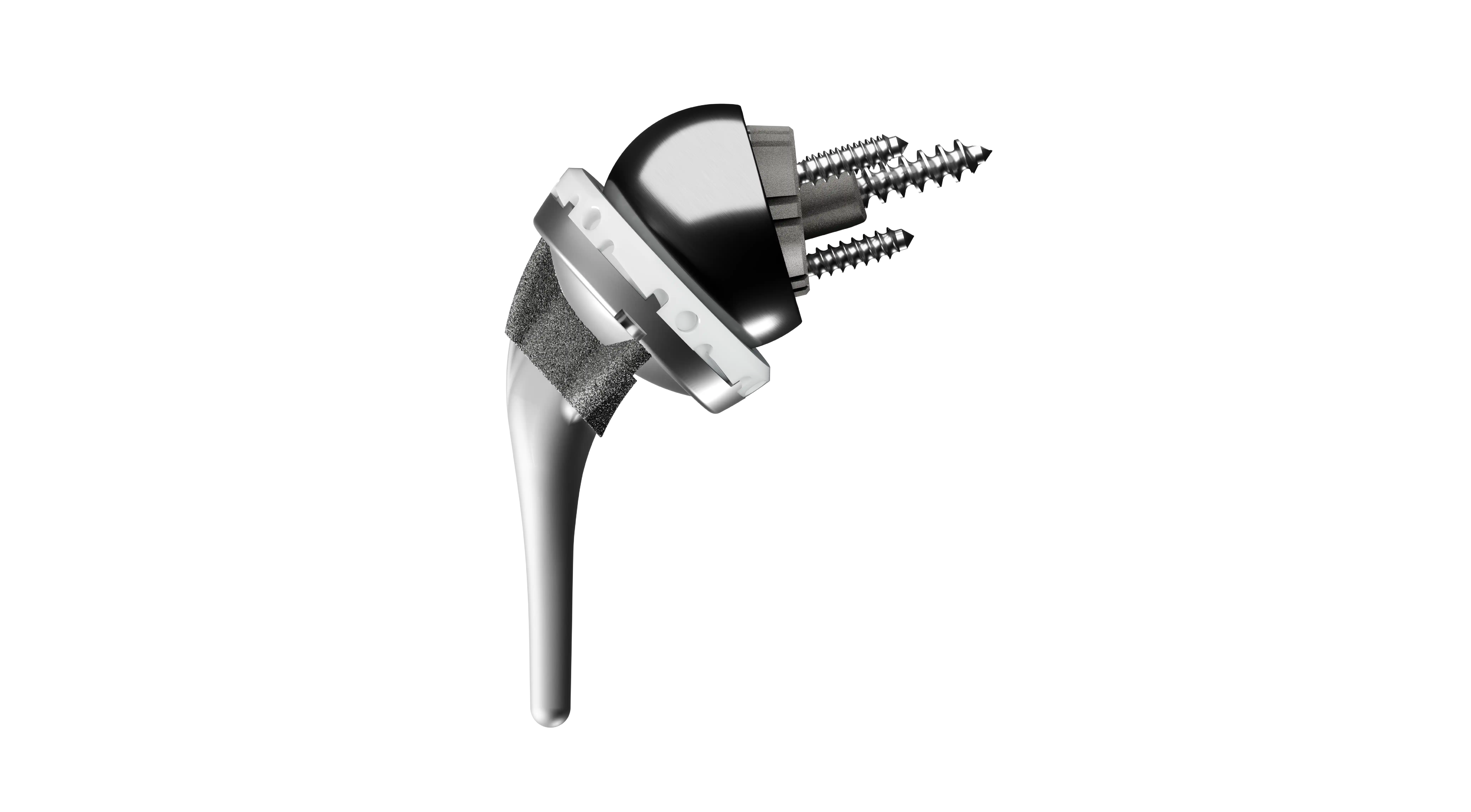Wondering how much weight you can lift after reverse shoulder replacement? Following post-surgery weightlifting guidelines will help you recover safely and avoid complications. In this post, we’ll cover recommended weightlifting limits, safe practices, and how to gradually rebuild your strength post-surgery.
Key Takeaways
- Reverse shoulder replacement surgery enhances shoulder function by allowing the deltoid muscle to compensate for damaged rotator cuff muscles.
- Patients should generally limit weightlifting to a maximum of 25 pounds overhead and avoid returning to lifting until cleared by their surgeon.
- Adherence to a structured rehabilitation program post-surgery is essential for safe recovery and preventing re-injury during weightlifting.
Understanding Reverse Shoulder Replacement
Reverse shoulder replacement surgery is a transformative procedure designed for patients with conditions like severe arthritis or significant rotator cuff damage.
Unlike traditional shoulder replacements, this surgery reverses the normal anatomy of the shoulder by placing the ball component on the shoulder blade and the socket on the upper arm bone. This innovative approach allows the deltoid muscle to take over the function of the rotator cuff muscles.

Reverse shoulder replacement surgery aims to not only alleviate shoulder pain but also restore range of motion and function, making everyday tasks and activities more manageable. The growing popularity of reverse shoulder replacements speaks to their effectiveness.
Weightlifting Restrictions Post-Surgery
Following reverse shoulder replacement surgery, it is important to follow weightlifting restrictions to ensure proper healing and avoid damage to the joint.
Plan to limit overall use of the surgical arm until cleared by an experienced orthopedic surgeon. Typically, patients can begin lifting weights around four to six months post-surgery, but this timeline can vary depending on individual recovery progress.
Gradual progression is key. When cleared to resume weightlifting, it is recommended to start with light weights and slowly increase the weight by no more than 10-15% every 10-14 days. This cautious approach helps to build strength without overloading the shoulder joint. Rest periods between workouts are equally important to allow the shoulder to recover and restore range while reducing the risk of re-injury.
In the long term, patients are generally advised to avoid lifting more than 25 pounds overhead, though weight restrictions may differ between patients. Weight restrictions are in place to prevent unnecessary strain on the new shoulder joint.
Role of Physical Therapy in Recovery
Physical therapy plays an important role in restoring mobility and foundational strength after reverse shoulder replacement. A physical therapist will design and implement an individualized rehabilitation program tailored to your specific needs and goals. This structured approach ensures that you are performing exercises that promote healing, improve range of motion, and build strength in the stabilizing muscles.
Preparing for weightlifting post-surgery often begins with physical therapy. The program often includes light resistance exercises that are beneficial for shoulder recovery. These exercises help build a solid foundation for lifting before progressing to heavier weights.
Warming up and cooling down during workouts is also key to maintaining joint health and preventing injuries. Regular consultations with your physical therapist ensure that you are on the right track and making safe progress towards your recovery goals.
Safe Weightlifting Practices After Reverse Shoulder Replacement
Once cleared by your surgeon and physical therapist, you can gradually return to strength training. Certain exercises are generally considered safer during recovery. For instance, bicep curls and triceps pulldowns are often recommended exercises to avoid excessive strain. They help strengthen the muscles around the shoulder without placing undue stress on the joint.
Especially early on, plan to avoid exercises that place the arms in extended or wide positions, as these can compromise shoulder stability. Overhead lifts, in particular, should be avoided until you have achieved full shoulder range of motion and received clearance from your healthcare team.
Open communication with your surgeon and physical therapist is essential. They can provide personalized guidance and ensure that your weightlifting practices are aligned with your recovery goals. By following their advice, you can safely regain your shoulder strength and functionality.
Gradual Progression in Weightlifting
Gradual progression is essential for safe weightlifting after shoulder replacement surgery. The key is to start with low weights, focusing on proper form. Plan to increase load by no more than 10-15% every 10-14 days. This slow and steady progression allows your shoulder to adapt to the new demands without overexertion.
Patients should monitor their discomfort and pain levels during weightlifting exercises, especially when increasing the amount of weight being lifted. If you experience pain, it is important to stop and reassess.
Continuous monitoring of your progress is important. Keeping track of your weightlifting routine, pain levels, and strength improvements can help you and your healthcare team make informed decisions about your recovery. Remember, the goal is not just to lift heavier weights but to build sustainable shoulder strength and functionality.
Tips to Prevent Re-Injury
Preventing re-injury is essential when returning to weightlifting after reverse shoulder replacement surgery. One of the most important factors is maintaining proper form during every exercise. Good form helps to distribute the load evenly across the shoulder joint and reduces the risk of strain and injury.
It’s equally important to listen to your body’s signals. Pain or discomfort during or after exercise may signal that you’re pushing too hard, which may set back your recovery.
To protect your shoulder while lifting weights:
- Use lighter weights that allow for controlled, pain-free movement
- Take adequate rest between sets to allow the shoulder to recover
- Seek advice from your surgeon and physical therapist to ensure your strength routine is safe and effective
By focusing on proper technique, pacing your workouts, and making thoughtful adjustments to your routine, you can safely rebuild strength while minimizing the risk of re-injury.
Summary
In summary, reverse shoulder replacement surgery offers a path to pain relief and improved shoulder function for those with severe shoulder injuries. By understanding the weightlifting restrictions and following safe practices, you can regain your shoulder strength without compromising your recovery. Gradual progression in weightlifting, guided by physical therapy, plays an important role in ensuring a safe and effective recovery.
Always consult with your orthopedic surgeon and follow expert advice to navigate the complexities of post-surgery recovery. With patience, perseverance, and the right support, you can achieve a successful recovery and return to your normal daily activities and an active lifestyle.
Frequently Asked Questions
What are the general weightlifting restrictions post-surgery?
Patients are generally advised not to lift more than 25 pounds overhead and 40 pounds in other positions with the surgical arm. Always wait for medical clearance before resuming weight training.
What exercises are safe to perform after reverse shoulder replacement?
When cleared to resume weightlifting, exercises like bicep curls and triceps pulldowns are typically considered safe and effective following reverse shoulder replacement surgery. Overhead lifts and positions that extend or widen the arms should be avoided until your healthcare team advises otherwise.
Why is physical therapy important in recovery?
Physical therapy aids in regaining strength, flexibility, and range of motion while reducing the risk of re-injury. Prioritizing physical therapy and adhering to the rehabilitation plan ensures a safe and effective recovery process.
How should I progress in weightlifting after shoulder replacement surgery?
Progress slowly by starting with lighter weights, increasing intensity by 10-15% every 10-14 days while closely monitoring your pain levels. Regular consultations with your surgeon and physical therapist will ensure a safe and effective recovery.
Why should I consult with an orthopedic surgeon before resuming weightlifting?
Consulting with an orthopedic surgeon before resuming weightlifting is essential because they offer tailored advice based on your recovery and health, helping you avoid injury and complications. Their expertise ensures a safer return to your routine.



